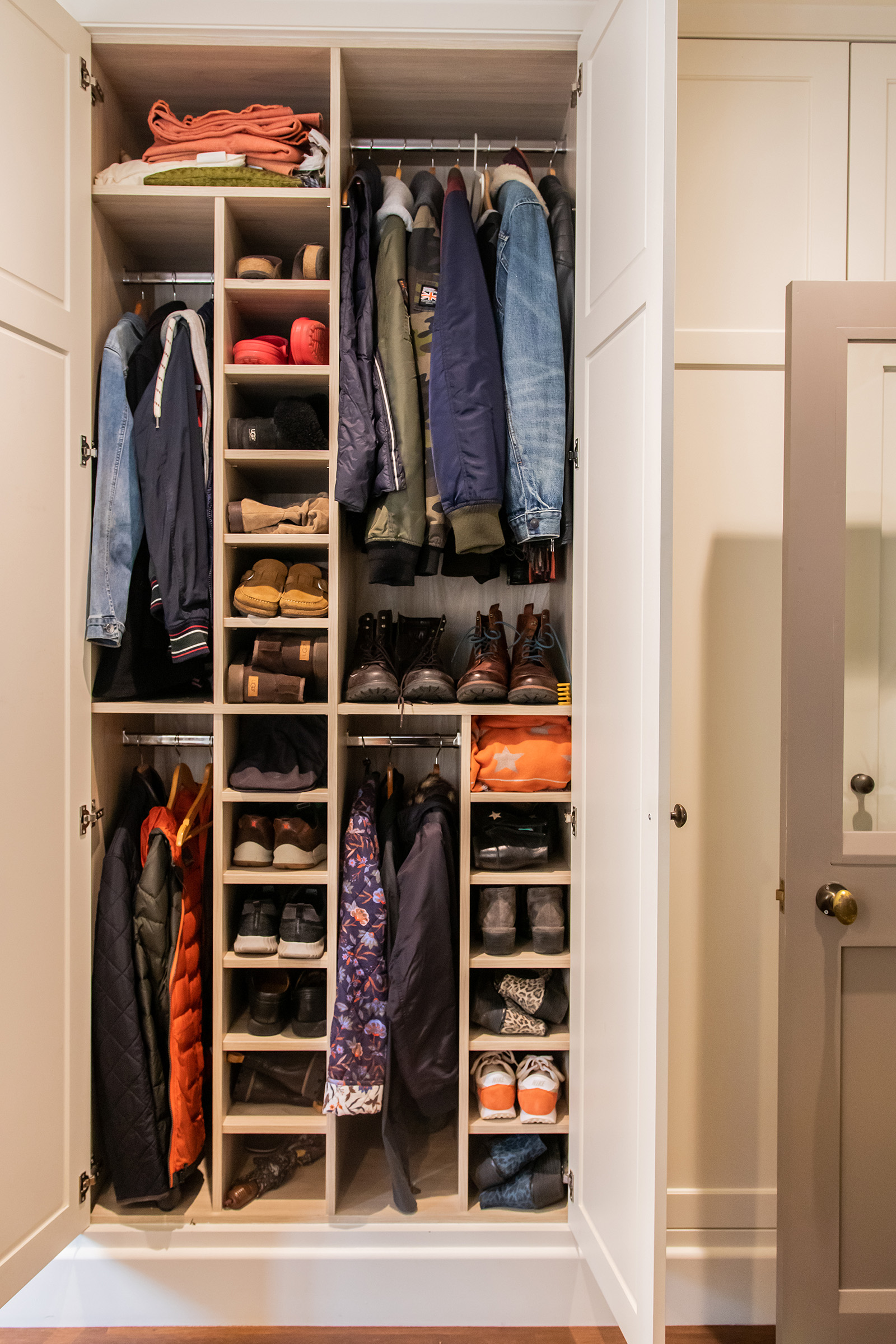When you open the door to hearth and home, your hallway is the first thing that greets you and your guests, setting the tone for what follows. All too often reality bites into this space and the clutter of shoes, coats, damp umbrellas, not to mention children’s bookbags and sports kit, overwhelm and create a bad first impression in what is an otherwise beautiful home. Creating the right first impression and providing a space for the reality of home life are not necessarily contradictory goals; let’s discuss what makes a beautiful hallway space.
Creating a sense of calm
Coming home and opening the door into a relaxing and beautiful hallway after a long day away is one of life’s pleasures and instantly delivers the feeling of security and warmth that we crave. Whilst not everyone has a large hallway space, it is possible to ensure this area fosters a sense of ordered calm, which can start to translate into an improved mood and bring welcome relief from the stresses of life outside its four walls.
One of the main ways to facilitate a feeling of calm is to keep clutter to a minimum. Clutter is anything that is visually messy, and can be defined as anything that does not have a space in which it belongs. Too many coats, shoes, bags or even patterns or textures can all contribute to visual clutter. Good storage and an edited number of visual elements will yield dividends in providing a sense of spaciousness that ensures coming home remains one of life’s simple pleasures.
Storage, but not as you know it
Narrow hallways are the norm in many terraced properties and all too often an already narrow space is made even worse through the addition of coat hooks and shoe racks. Whilst these may initially seem to offer a practical solution, they are often counterproductive, and without discipline, coats can end up being stacked one atop another or even fall to the floor, whilst piles of shoes can prevent the ability to navigate the space with the weekly food shop.
The best solution is to find storage that might be further along into the space and usually we all head straight to the kitchen. In this, the heart of the home, there is usually tall storage already in place and so allocating a cupboard to the storage of coats and shoes can ensure hallways retain their sense of elegance.

Larger hallways
On the flip side of the narrow hallway, is the enormity of the challenge when the front door opens directly into a front room or living space. Here you are confronted perhaps with lively activity and a welcome from family the moment you enter.
Many a parent would confirm the need to sometimes drop everything to accept an embrace when they enter, and more so when the family member gets a good run up to the unsuspecting recipient of their affections. In these spaces, it is sometimes easier to have the classic coat, hat and bench set up that allows for quick and easy placement of items as soon as you enter. When guests arrive, they too can take advantage of having a clear space for coats and then a larger space in which they can start to be assimilated into the home environment, perhaps more gently than a family member.
With space to sit, and beautiful objet displayed, these larger hallways give an instant glimpse of the feel of the home and offer an excellent decorative platform for setting the tone of the home throughout the ground floor.

Entryways
Flats and apartments offer a wholly different approach to coming home and usually have a dedicated entry space which is often square, giving more flexibility when planning storage and catering for the ceremonial re-entry to the home environment.
These spaces may be able to accommodate worktop areas, which offer display space, a place to deposit keys or a handbag and the all-important bench for removing shoes. Drawers can be used to store shoes under a bench seat and radiators can be concealed with integrated covers to create a harmonious seating space that looks intentional and sophisticated. Bespoke storage for halls and entry areas offer endless opportunities for both storage and concealment, be it radiators, boilers or gas metres, all can be hidden with planning and good design.

